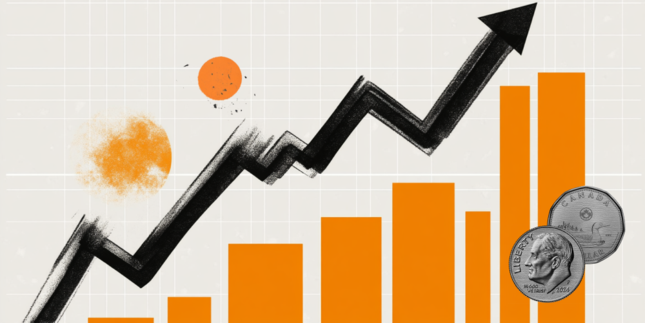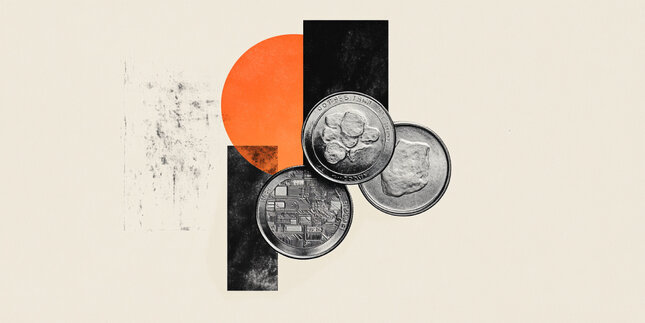EUR/USD drifts lower to near 1.0450 on Trump’s tariff threats
- EUR/USD softens to near 1.0465 in Thursday’s Asian trading hours, down 0.20% on the day.
- Trump vowed to slap 25% tariffs on the EU, weighing on the Euro.
- Traders are once again pricing in two quarter-point interest rate reductions by the Fed.
The EUR/USD pair loses ground to around 1.0465 during the Asian trading hours on Thursday. The Euro (EUR) weakens after US President Donald Trump threatened to slap 25% tariffs on the European Union. Investors await the release of the estimate of US Gross Domestic Product (GDP) for the fourth quarter (Q4) and the weekly Initial Jobless Claims for fresh impetus, which are due later on Thursday.
Late Wednesday, US President Donald Trump reiterated his insistence on 25% tariffs on Canada and Mexico, as well as adding the European Union (EU) to the list of countries from which he will penalize US consumers for importing. The EU vowed to respond “firmly and immediately” to “unjustified” trade barriers, indicating that it stands ready to retaliate swiftly against new levies. Trump’s tariff threats could worsen the Eurozone’s economic slowdown and might drag the shared currency lower against the US Dollar (USD).
Across the pond, the concern about US economic growth has bolstered expectations the US Federal Reserve (Fed) will deliver at least two rate cuts this year, undermining the Greenback. The markets are now pricing about 58 basis points (bps) of easing for 2025, although rates are expected to remain on hold for the next several months, according to the CME FedWatch tool.
Euro FAQs
The Euro is the currency for the 19 European Union countries that belong to the Eurozone. It is the second most heavily traded currency in the world behind the US Dollar. In 2022, it accounted for 31% of all foreign exchange transactions, with an average daily turnover of over $2.2 trillion a day. EUR/USD is the most heavily traded currency pair in the world, accounting for an estimated 30% off all transactions, followed by EUR/JPY (4%), EUR/GBP (3%) and EUR/AUD (2%).
The European Central Bank (ECB) in Frankfurt, Germany, is the reserve bank for the Eurozone. The ECB sets interest rates and manages monetary policy. The ECB’s primary mandate is to maintain price stability, which means either controlling inflation or stimulating growth. Its primary tool is the raising or lowering of interest rates. Relatively high interest rates – or the expectation of higher rates – will usually benefit the Euro and vice versa. The ECB Governing Council makes monetary policy decisions at meetings held eight times a year. Decisions are made by heads of the Eurozone national banks and six permanent members, including the President of the ECB, Christine Lagarde.
Eurozone inflation data, measured by the Harmonized Index of Consumer Prices (HICP), is an important econometric for the Euro. If inflation rises more than expected, especially if above the ECB’s 2% target, it obliges the ECB to raise interest rates to bring it back under control. Relatively high interest rates compared to its counterparts will usually benefit the Euro, as it makes the region more attractive as a place for global investors to park their money.
Data releases gauge the health of the economy and can impact on the Euro. Indicators such as GDP, Manufacturing and Services PMIs, employment, and consumer sentiment surveys can all influence the direction of the single currency. A strong economy is good for the Euro. Not only does it attract more foreign investment but it may encourage the ECB to put up interest rates, which will directly strengthen the Euro. Otherwise, if economic data is weak, the Euro is likely to fall. Economic data for the four largest economies in the euro area (Germany, France, Italy and Spain) are especially significant, as they account for 75% of the Eurozone’s economy.
Another significant data release for the Euro is the Trade Balance. This indicator measures the difference between what a country earns from its exports and what it spends on imports over a given period. If a country produces highly sought after exports then its currency will gain in value purely from the extra demand created from foreign buyers seeking to purchase these goods. Therefore, a positive net Trade Balance strengthens a currency and vice versa for a negative balance.
Forex News
Keep up with the financial markets, know what's happening and what is affecting the markets with our latest market updates. Analyze market movers, trends and build your trading strategies accordingly.

























